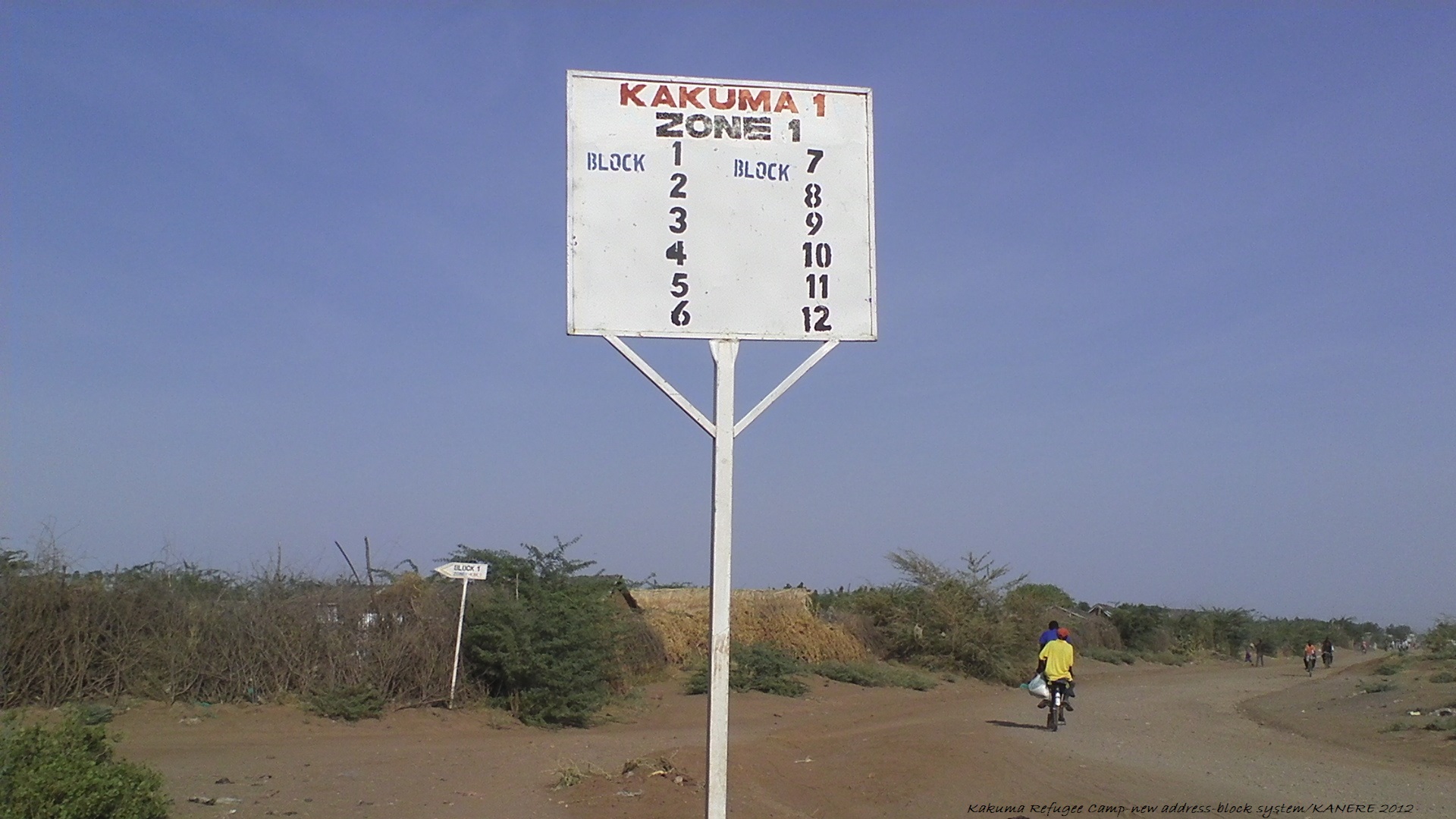KANERE Editorial Desk – April, 2012
Refugee shelters destroyed to pave way to new settlement structure and blocking system.
The Kakuma refugee camp is currently under the new camp address and blocking system that falls under address level 2 according to the camp master plan. 2011 has been a busy year for the National Council of Churches of Kenya (NCCK) in regard to site planning and layout by demarcating plots for putting up new muddy, brick houses in areas abandoned by the Sudanese during repatriation. At the same time, refugee-owned shelters and shops have been demolished alongside the main road of the Camp. This has led to remarkable refugee business loss, estimated in the hundreds of thousands Kenyan Shillings.

In conjunction with the Kenyan Government Dept. for Refugee Affairs (DRA), the camp governing body has embraced the benefits of a well-planned camp layout. The year 2011 marked the active establishment and maintenance of plot recording, plot assignment and plot transfer systems. The Governing body also believes that the new address will enhance emergency response, tracing and accessibility.
Previously the camp was characterized by the administration structure and naming of groups and communities was based on nationality, tribe and clan affiliations. The move to change from the old camp address system known as Zones and Groups is welcomed by refugees.
With the new address, area of the camp known as Kakuma 1, 2 and 3 have been further sub-divided into zones and blocks. The block is the smallest refugee settlement unit and is comprised of mixed nationalities. The block has a population of between 500 – 1,000 individuals who reside in houses. Refugees said the new address is easy and much clearer for purposes of transmitting communications in camps like Kakuma. It is expected that with this new camp address service delivery will be faster. The physical development and settlement reflects the residential areas, and communal and social spaces and amenities. There are road reserves with the intention of streamlining the new settlement structure in the camps by redesigning settlement areas with sequential naming system.
However; some refugees who run businesses showed mixed feelings about the new planning process as many of them felt that this process constituted a violation. Some have told the KANERE team that they have rejected the move on decongestion despite certain areas encroaching on public roads. These refugees claim that the concerned parties have not engaged in sufficient sensitizations and information sharing in the community; rather issuing order of destruction summarily. “We should be consulted. We are human beings, what good do you think you do for refugees when we don’t see you doing it the right way?” asked a refugee shop owner at the Kakuma 1 market.
“No compensation! No consultations!” a Rwandan shop holder added. “Refugees spend a lot of years and money establishing their small shops like this, but here comes NCCK orders to destroy our shops and I wonder whether refugees have any rights to own property?” he asked.
This was a commonly shared sentiment for most refugees who talked to the journalist. On address level 2, the camp has a total of 8 zones and 94 blocks that have few posts of solar lights and sign boards. The camp residents have lost hope of seeing their street lighting. A staff member who did not want to be named confirmed to KANERE that the Environmental Development Project (EDP) won’t continue any more.
Many refugees have lived in the Camp for more than eighteen years and have come up with innovative way to provide for their family non-food items that they do not receive from agencies by establishing small shops. This is critical in terms of clothing, entertainment and sometimes food especially green vegetables and meat. ‘‘We would like to have new planning with new feeding options’’ a community leader said. “I think WFP (World Food Programme) can distribute money to refugees to avoid causing us stress,” she concluded.
In December 2010 the UN High Commissioner for Refugee in partnership with the Government Department for Refugee Affairs at Kakuma started a refugee verification exercise that aimed to count all refugees in Kakuma to issue them identification papers.
The move came after the passage of the Refugee Act of 2006 in Kenya. Refugees at Kakuma positively welcome the verification process and showing appreciation for this act of recognition on the part of the Kenyan Government that surpassed the UNHCR papers and food token cards.
The exercise is conducted few years after Sudanese refugees started their repatriation with the camp population still doubling in the last eight months to 84,000 as reported by UNHCR figures released during the Food Advisory Committee (FAC) meetings. The Kakuma camp population is already high and there are always problems with water, shelter, and firewood distribution. The government has given new land at Kalobei Village about 30km away from Kakuma to settle new arrivals with the hope that the plan will decongest the Daadab camp and relocate some of the Kakuma refugees.
